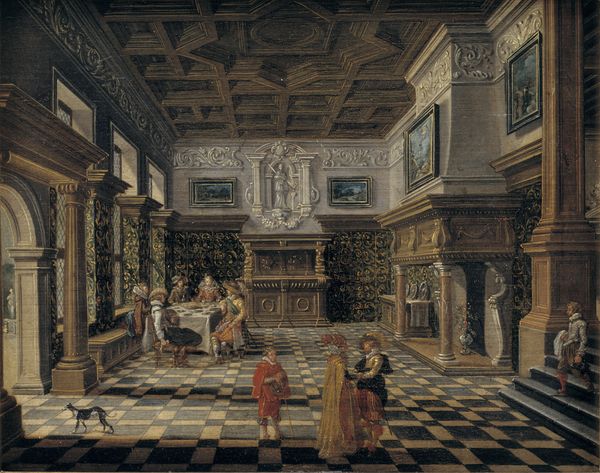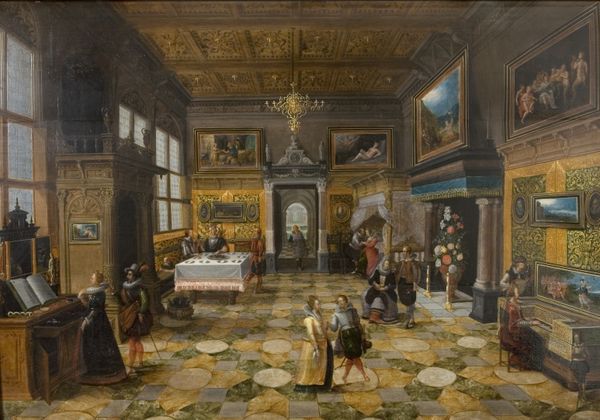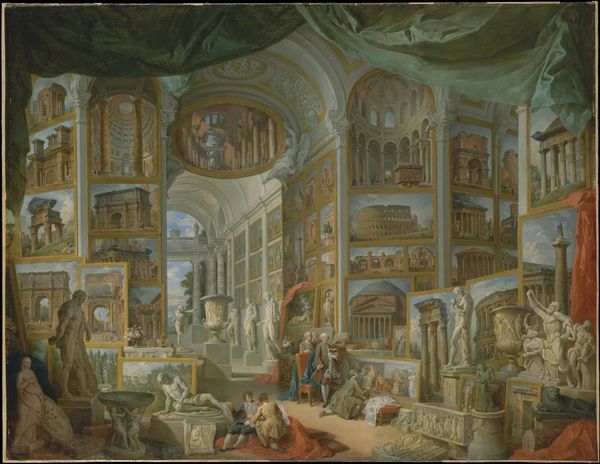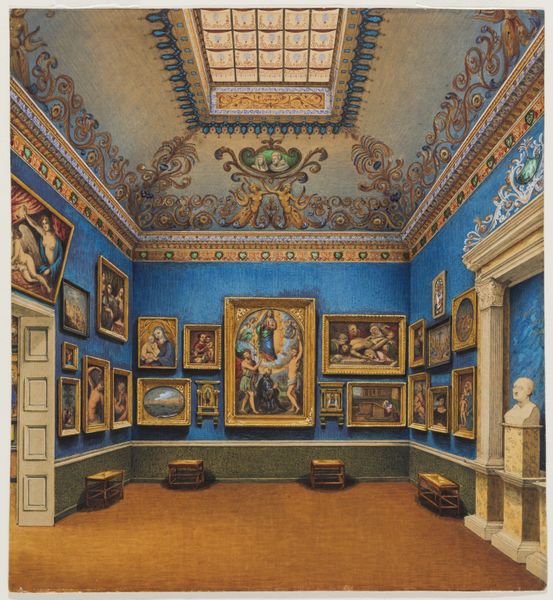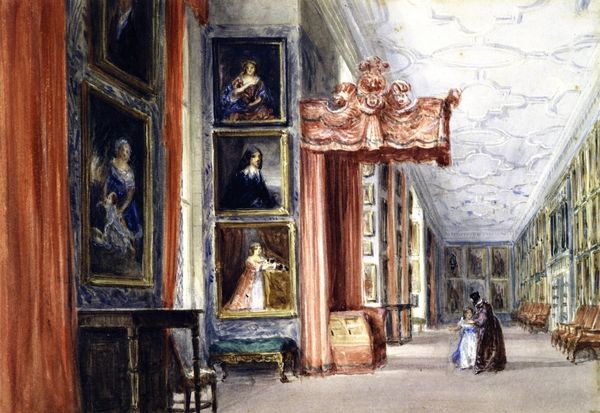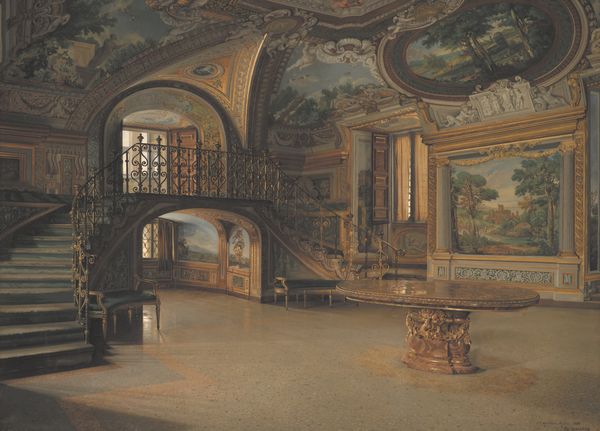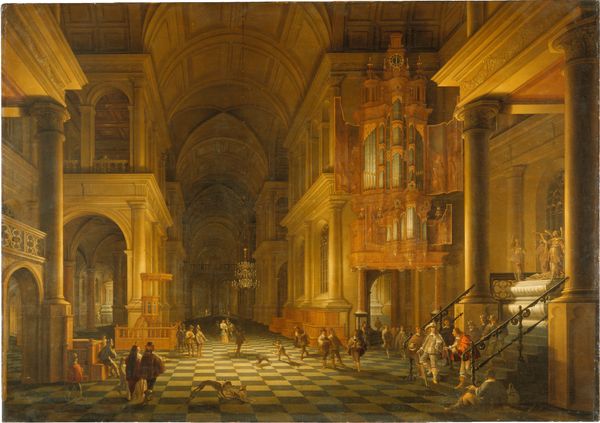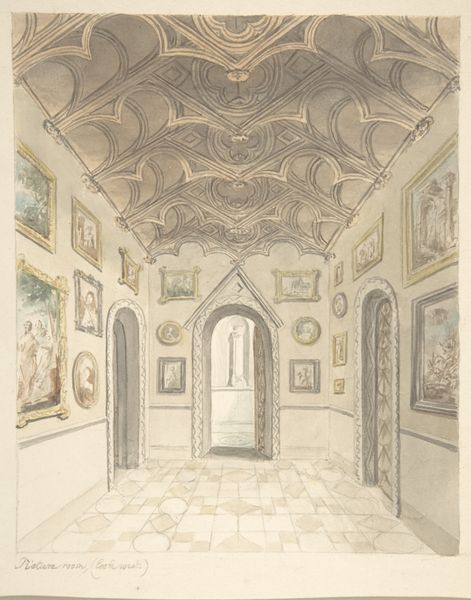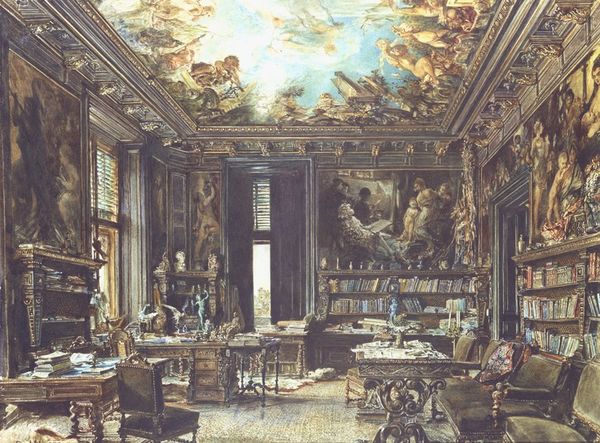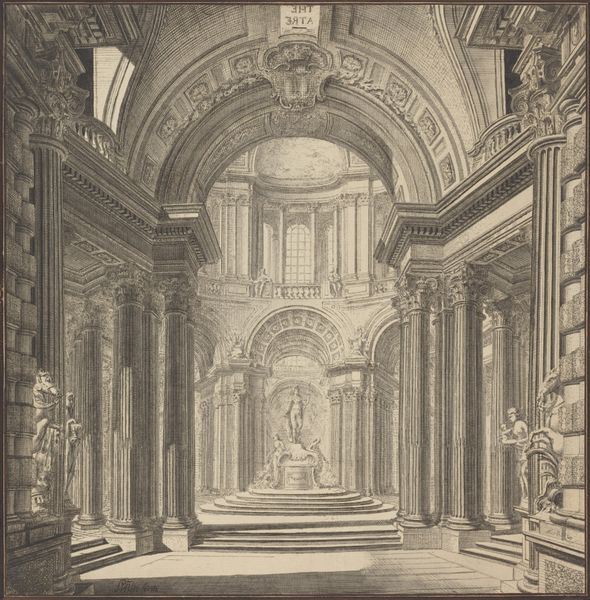
painting, oil-paint
#
baroque
#
dutch-golden-age
#
painting
#
oil-paint
#
perspective
#
historic architecture
#
site analysis
#
classicism
#
group-portraits
#
genre-painting
Dimensions: support height 71 cm, support width 101.2 cm
Copyright: Rijks Museum: Open Domain
Editor: Here we have Bartholomeus van Bassen's "Interior with a Company," painted around 1622 to 1624, using oil paint. It feels incredibly staged, almost like a dollhouse view, despite the realism in the figures and the grandeur of the architecture. How would you interpret this piece? Curator: What I see immediately is the painstaking detail, the sheer labor involved in representing this opulent interior. Look at the precise rendering of the checkered floor, the coffered ceiling, the multiple fireplaces, the materiality of each surface. It begs the question: whose labor was actually required to produce and maintain these surfaces, these objects? Who benefits from all of this? Editor: That's interesting. So, instead of focusing on the people depicted, you're drawn to the creation of the space itself, and who created that space. Curator: Precisely. And consider the painting itself as a commodity. The oil paints, the canvas, the artist’s time and skill – these all represent resources consumed in the production of an image showcasing wealth and power. This isn’t simply a scene; it's a display of capital translated into artistry and craftsmanship. The fact that perspective is on full display also contributes, what do you make of it? Editor: It's as though van Bassen isn't just capturing a scene, but he’s also displaying his own mastery and wealth in this technique, creating and controlling this constructed, architectural, artificial reality with great mastery. Curator: Exactly! The artist uses technique, uses available materials to create an impression. Perhaps also cementing a higher social status for the master painter? Editor: That makes a lot of sense. I initially focused on the "who" but it’s clear now that considering the "how" and "what" -- the actual materials and the making -- provides a much deeper understanding of the artwork and its function in society. Curator: Indeed. By thinking through its production, we unravel its meaning and the cultural context in which such elaborate displays of wealth were not only possible, but also desirable.
Comments
rijksmuseum about 2 years ago
⋮
Van Bassen painted the interior, and his colleague Van de Velde the figures. The composition represents an elegant company in a grand, stylish residence with paintings on the walls, decorated cabinets, a monumental chimneypiece and an elaborate wooden coffered ceiling. The decorations were inspired by designs by the architect Hans Vredeman de Vries. This interior never actually existed – it is an idealized image.
Join the conversation
Join millions of artists and users on Artera today and experience the ultimate creative platform.
